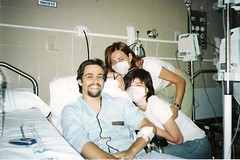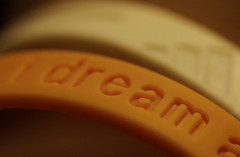| 488408377 | habituation | repeated exposure reduces emotional response to a stimulus -anxiety disorders (PHOBIAS) |  |
| 488408378 | exposure | repeated contact with a feared/arousing stimulus in controlled setting (leads to habituation) |  |
| 488408379 | managed care | health insurance plan may restrict # days in hospital or restrict facilities where patient can receive care |  |
| 488408380 | treating a multicultural population | bridging cultural gap between patient and clinician | |
| 488408381 | problems with treating minorities | -less likely to use MI services -less likely to have healthcare coverage -may not speak English -distrust treatment -stigma of treatments (fear) | |
| 488408382 | cultural competence | clinical treatment should be sensitive to different cultural backgrounds | |
| 488408383 | prevention programs | designed to prevent/inhibit development or progression of psychological disorders; targets those with elevated risks (family history, traumatic event, divorce, etc) | |
| 488408384 | group therapy | several patients with similar needs meet together to discuss issues with therapists; offers emotional support, uses psychodynamic/CB orientation | |
| 488408385 | systems therapy | designed to change the communication/behavior patterns of one or more family members in context of family as a whole GOALS: identify/change maladaptive patterns of interaction and communication among family members |  |
| 488408386 | paradoxical intention | therapist allows problem behavior to continue and increase in intensity or frequency (ex: if a child is acting out to bring quarreling parents together...) |  |
| 488408387 | cybertherapy | internet-based therapy that may involve email exchanges, skyping etc | |
| 488408388 | dialectical behavior therapy (DBT) | designed to treat BPD; builds skills to manage emotions, and focuses on validating patient's experience. "Dialectics" component = allows opposing beliefs and feelings to co-exist |  |
| 488408389 | psychoeducation | educating patients about research findings/therapy procedures relevant to situations | |
| 488408390 | cognitive restructuring | developed by Aaron Beck; psychological problems result from faulty automatic thoughts (cognitive theory for depression) |  |
| 488408391 | foundations of treatment | -reduce or eliminate psychological disorders -reduce or eliminate target symptoms -improve quality of life | |
| 488408392 | target symptoms | symptoms addressed by a given treatment | |
| 488408393 | biomedical treatments | aim to change brain functioning, hormonal activity, or other aspects of bodily functioning |  |
| 488408394 | agonists | mimic the effects of a neurotransmitter/neuromodulator to activate a receptor | |
| 488408395 | antagonists | bind to a receptor site and prevent neurotransmitter in synapse from binding to that receptor | |
| 488408396 | reuptake inhibitors | partially block the process by which neurotransmitters are reabsorbed into terminal button | |
| 488408397 | SSRI | selective serotonin reuptake inhibitor -Prozac, Zoloft |  |
| 488408398 | SNRI | serotonin and norepinephrine reuptake inhibitor -effexor, cymbalta |  |
| 488408399 | antipsychotics | reduce certain psychotic symptoms; known as "major tranquilizers," used to treat schizophrenia -prevent dopamine binding in synapse |  |
| 488408400 | treatments for depression | -SSRIs -SNRIs -Tricyclic antidepressants (TCA) -MAOIs (need to be on tyramine-controlled diet) | |
| 488408401 | short-term anxiety treatments | benzodiazepines (minor tranquilizers) -help to reduce anxiety quickly (Valium, Xanax) | |
| 488408402 | electroconvulsive therapy (ECT) | used to treat severe depression when all other types of therapy fail -controlled brain seizure, short term memory loss | |
| 488408403 | transcranial magnetic stimulation (TMS) | sequences of short, strong magnetic pulses into cerebral cortex via coil -treatment resistant depression, no more advantageous than ECT but less side effects -elderly with depression see improvements with this technique | |
| 488408404 | biofeedback | subject brings involuntary/unconscious bodily activities under voluntary control (MOOD RINGS) -slowed heart rate, control of breathing, etc |  |
| 488408405 | psychodynamic therapy | all behavior has underlying psychological causes; unconscious driven by urges for sex and aggression, behaviors represent responses to urges |  |
| 488408406 | goals of psychoanalysis | -understand events in personal past -understand how those events and unconscious conflict and influence current difficulties -"Insight" is main catalyst of change | |
| 488408407 | therapeutic alliance | positive relationship between therapist and patient |  |
| 488408408 | dream analysis | therapist interprets content of patient's dreams: manifest content- content of dream latent content- hidden, true meaning expressed by unconscious |  |
| 488408409 | resistance | patients are likely (overtly/covertly, consciously/unconsciously) to hinder treatment | |
| 488408410 | transference | patients interact with therapist in manner that they did with parents/important figures; developed by Freud, encouraged by therapist to explore patient feelings | |
| 488408411 | client-centered therapy | humanistic therapy (Carl Rogers), intended to promote personal growth so that client can reach full potential; arises from incongruence between "real self" and "ideal self" |  |
| 488408412 | unconditional positive regard | therapist expresses positive feelings for client, regardless of expressed thoughts, emotions, or behaviors | |
| 488408413 | behavior therapy | maladaptive behaviors stem from previous learning goal: replace problematic behaviors with classical/operant conditioning models | |
| 488408414 | cognitive therapy | correct irrational thoughts and incorrect beliefs, lead to better mood/adaptive behavior | |
| 488408415 | systematic desensitization | learning to relax in presence of feared stimulus |  |
| 488408416 | exposure with response prevention | used to treat compulsive behaviors; patient is prevented from engaging in usual maladaptive response after being exposed to stimulus | |
| 488408417 | stimulus control | changing frequency of maladaptive conditioned response by controlling the frequency/intensity of exposure | |
| 488408418 | behavior modification | use of operant conditioning principles to change maladaptive behaviors goals: perform desired behavior more often and undesired behavior less often |  |
| 488408419 | shaping | creating behavioral change by reinforcing bits at a time (successive approximations) |  |
| 488408420 | rational-emotive behavior therapy | (Albert Ellis) irrational thoughts are transformed into rational ones, leading to better mood and adaptive behaviors PROMOTES self-acceptance REDUCES self-blame |  |
| 488408421 | scientific method | process of gathering and interpreting facts that can lead to formation of a new theory or validation of existing theory |  |
| 488408422 | scientific method steps | 1. Collect initial observations 2. Identify question to be answered 3. Develop hypothesis 4. Collect data to test hypothesis 5. Formulate theory 6. Test theory | |
| 488408423 | characteristics of the scientific method | data- methodological observations of phenomena replication- study must have similar characteristics of original hypothesis- preliminary idea to explain data set theory- principle that explains data set predictions- hypothesis should be confirmed if theory is correct experiment- manipulate one variable at a time and measure consequences | |
| 488408424 | confounds | factors that might affect variables of interest and covary with dependent (age, health, education, SES) | |
| 488408425 | sampling bias | distortion when experiment participants haven't been drawn randomly from population; limiting factor when want to generalize results to population you're treating | |
| 488408426 | correlational research | used when manipulating IV is impossible/unethical; cannot conclude causality | |
| 488408427 | correlation coefficient | -1 to 1, magnitude of relationship = "index of overlap" | |
| 488408428 | statistically significant | probability of obtaining the value of a statistical test is greater than would be expected by chance alone | |
| 488408429 | epidemiology | correlational research method that investigates rate of disease/disorder occurrence and causes/risk factors |  |
| 488408430 | case studies in psychopathology | one individual and factors that underlie disorder(s); in-depth understanding that allows individual/researcher to stay connected BUT cannot be generalized |  |
| 488408431 | single-participant experiment | experiments with a single participant; rely in ABAB design: A- baseline condition B- treatment/behavior modification goal: to change target behavior as result of treatment |  |
| 488408432 | meta-analysis | statistical procedure to generalize across studies that measure the same thing; may uncover relationship that isn't apparent in one study CON: "file drawer problem," some studies never make it to publication | |
| 488408433 | response bias | tendency to respond in a particular way, regardless of what is being asked |  |
| 488408434 | social desirability | answering questions in a way that makes subjects "look good," want to appear desirable |  |
| 488408435 | experimenter bias (expectancy effect) | treating participants in ways that encourage particular types of responses SOLUTION: double blind procedure | |
| 488408436 | reactivity | behavior change that occurs when one becomes aware of being observed |  |
| 488408437 | placebo effect | treatment that targets neurological factors, is one treatment more effective than no treatment? Inert substance or procedure | |
| 488408438 | common factors of therapy | -helpful aspects, opportunities to express problems -explanation/understanding of problems is offered -can gain support and feedback -hope and positive relationship | |
| 488408439 | specific factors of therapy | characteristics of a particular treatment/technique that lead it to have unique benefits | |
| 488408440 | analogue study | treatment is provided in a way that is analogous to the way it is usually provided, but under controlled lab conditions (minimize confounds) |  |
| 488408441 | treatment that targets psychological factors | is therapy better than no treatment? YES Assign participants to treatment vs. no treatment (wait-list control) | |
| 488408442 | baseline assessment | -levels of symptoms at beginning of study; assess same variables after treatment period | |
| 488408443 | randomized clinical trial (RCT) | -treatment and control group -random assignment to either group PROS: well-designed and well-conducted, evidence-based CONS: patients in study are usually white/middle-class -overly rigid manual-based treatment, length of treatment -question of external validity: can results be generalized? -problem with DSM diagnostic group heterogeneity |  |
| 488408444 | manual-based treatment | requires therapists to base treatments on detailed manuals |  |
| 488408445 | allegiance effect | studies conducted by investigators who prefer a particular theoretical orientation tend to obtain data that supports this orientation |  |
Abnormal Psychology Flashcards II Flashcards
Primary tabs
Need Help?
We hope your visit has been a productive one. If you're having any problems, or would like to give some feedback, we'd love to hear from you.
For general help, questions, and suggestions, try our dedicated support forums.
If you need to contact the Course-Notes.Org web experience team, please use our contact form.
Need Notes?
While we strive to provide the most comprehensive notes for as many high school textbooks as possible, there are certainly going to be some that we miss. Drop us a note and let us know which textbooks you need. Be sure to include which edition of the textbook you are using! If we see enough demand, we'll do whatever we can to get those notes up on the site for you!

